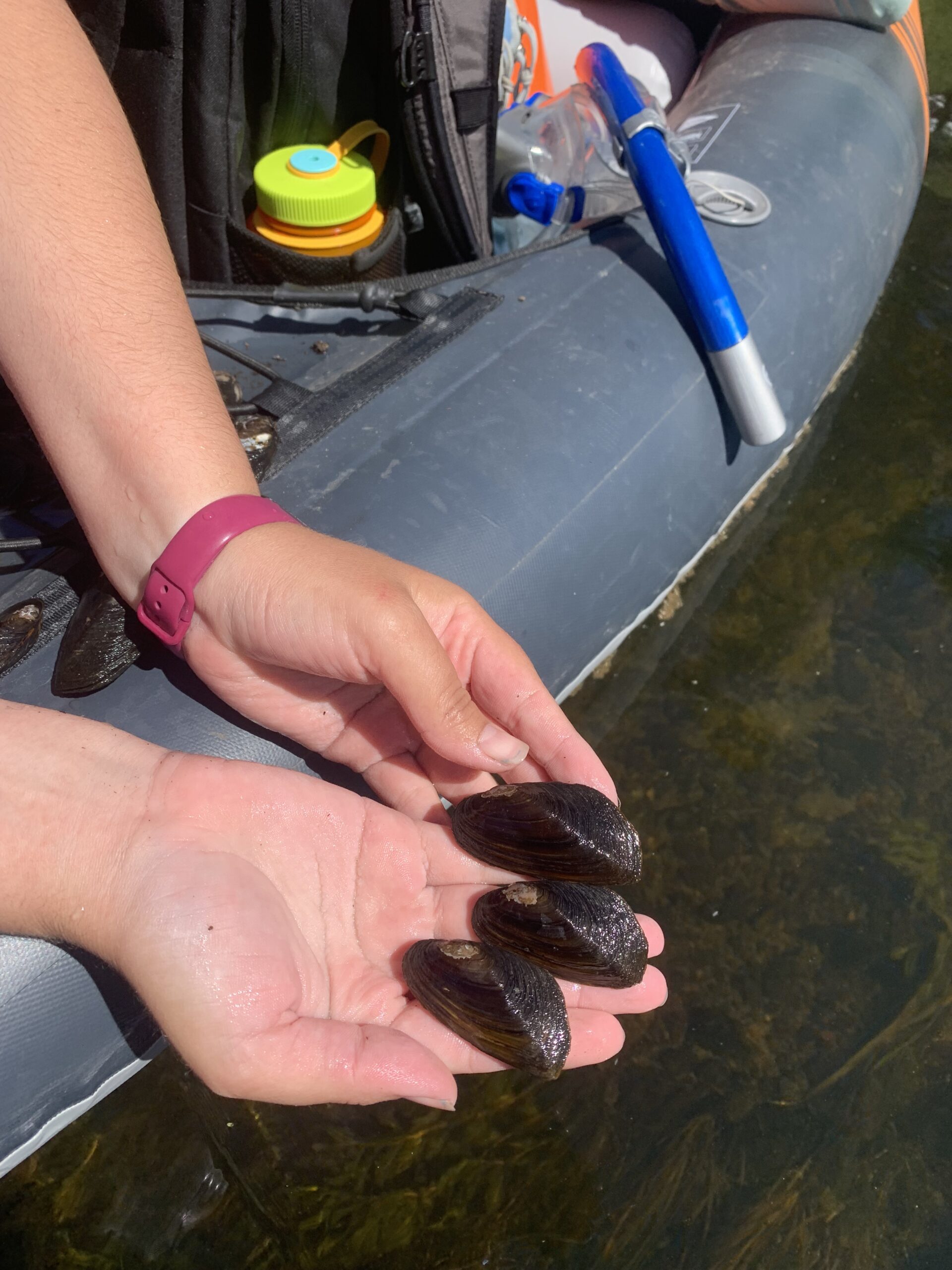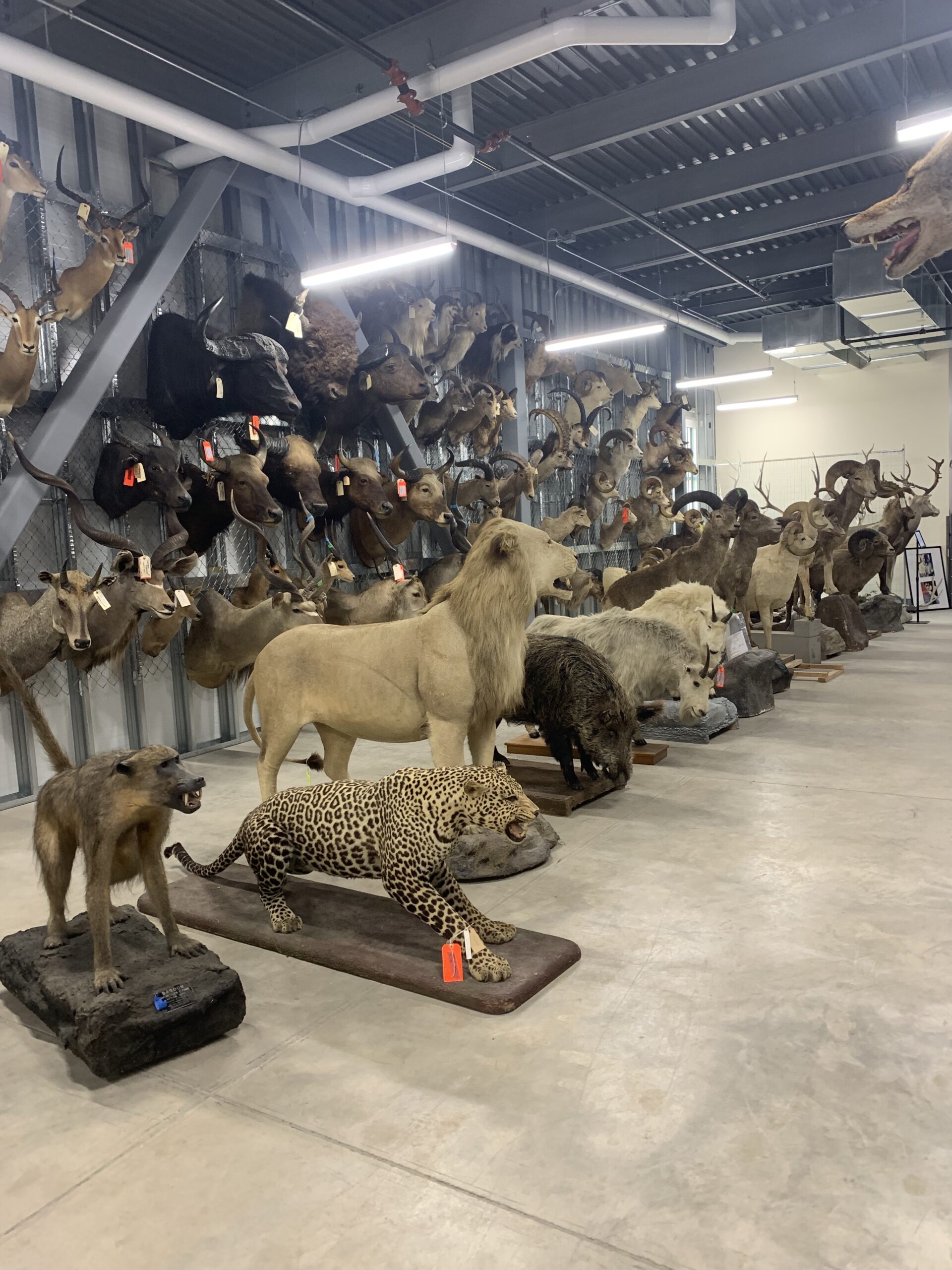Throughout the past month, we have been given the opportunity to conduct mussel surveys along the Sprague River. During these presence/ absence surveys, we have been looking for three mussel species: the California floater, western ridged, and western pearl shell mussels. The surveys, which are completed either by kayaking or snorkeling, have given us great views of the river as well as an opportunity to explore other wildlife! Before these surveys, I was unaware of the abundance of life among the riverbed.
I took an invertebrate biology course during undergrad and we had a section dedicated to mussels. I surprised myself with the knowledge I retained during the course, as I remembered where the mussel’s “tooth” and “foot” were located, which are important indicators when determining a species. Below are some examples of western ridged mussels observed along the Sprague.

We also had the opportunity to visit the wildlife forensics lab located in Ashland. I was a bit weary at first as I tend to get squeamish around deceased organisms, yet I faced my fears and learned so much about wildlife trade and trafficking. Wildlife trafficking was always a blurry subject for me, as I never understood how people got caught and what is considered illegal and legal. I learned that many tourists when traveling abroad want to bring back souvenirs such as ivory or animal fur, however, the gifts they acquired may have been illegally sourced. The gifts are then collected and brought to the forensics lab to determine where they originated and what type of animal was used. This is why the role of wildlife inspectors is crucial within international travel, as many goods are sourced from endangered species. Below is a collection of trophy animals donated by a family who had legal permits to hunt on safari trips, it is baffling that these animals were all acquired legally!

It was also interesting to learn about various cultural cosmologies. To a worker in southeast Asia, they might want to impress their boss by purchasing a “valued” good such as a sculpture from an endangered animal, since that animal is endangered, it is considered “rare”, meaning goods created from it have more value. To me and most people from the western world, this way of thinking seems skewed, however, this is common in several cultures across the globe. Throughout the tour, I kept asking myself, “how can we respect other cultures and animals at the same time?” I left the tour with more questions than I came with, so I hope to come back to the lab someday!
Every week I obtain a great appreciation for the work completed at U.S. Fish & Wildlife and I am so excited to share what is next to come.
